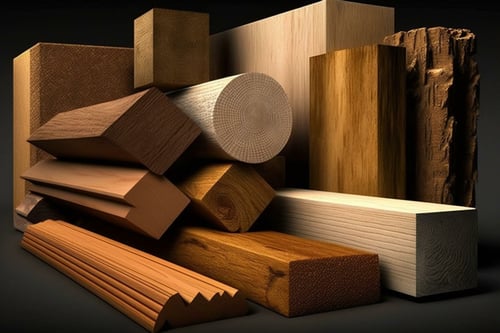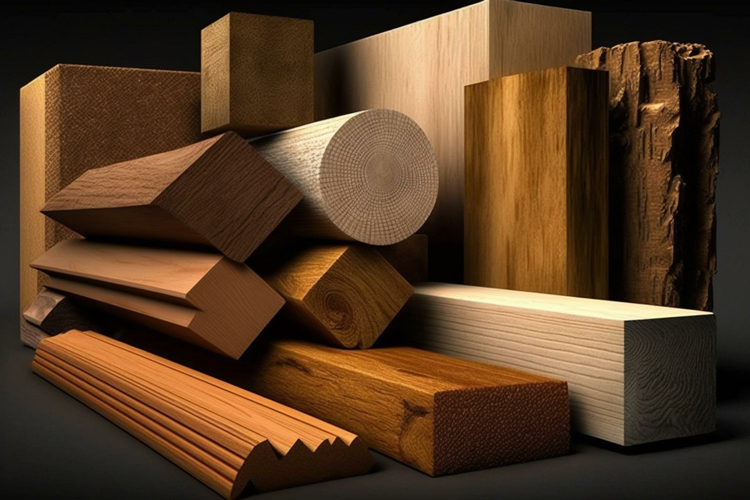Exploring the Types and Grades of Cedar
A Guide For Choosing The Right Wood For Your Project
Cedar is a popular wood for various interior and exterior projects due to its beauty, durability, and versatility. But did you know that not all cedar is the same? This blog post delves into the different types and grades of cedar, and explores their characteristics, uses, and benefits. This guide will provide you with valuable insights to help you decide on the right cedar for your project.

Types of Cedar
Northern White Cedar
This species is native to eastern North America and is highly valued for its lightweight, durable, and decay-resistant wood. Northern white cedar is commonly used for fence posts, shingles, siding, outdoor furniture, and boat building as well as in woodworking applications. Its natural aroma helps repel insects and moths, and its resistance to decay makes northern white cedar an excellent choice for outdoor structures.
Western Red Cedar:
One of the most sought-after types of cedar is western red cedar. This species is native to the Pacific Northwest and boasts stunning reddish-brown hues and is known for its outstanding durability. It is commonly used for exterior applications such as decking, siding, and outdoor furniture due to its resistance to decay and weather damage. Western red cedar also possesses natural insect-repellent properties, making it an ideal choice for outdoor projects.
Eastern Red Cedar:
Unlike western red cedar, eastern red cedar has a lighter reddish-brown color and a distinct aroma, often described as cedar's signature scent. This type of cedar is highly aromatic due to a high concentration of oils, which are a natural repellent of moths and insects. While eastern red cedar is less durable than western red cedar, it is still widely used for items such as closets, chests, and crafts. Its fragrance and beautiful grain patterns make it a preferred choice for interior applications.
Alaskan Yellow Cedar:
Alaskan yellow cedar, also referred to as Alaska cedar, is known for its exceptional strength and resistance to decay. It has a warm golden hue and is often used in applications where durability is essential, such as boatbuilding, exterior trim, and decking. Additionally, Alaskan yellow cedar's natural oils make it resistant to moisture, so this type of cedar is useful in humid environments and coastal regions.
Grades of Cedar
Cedar is available in several different grades, each suitable for specific purposes. The most common grades are:
Clear Cedar:
The highest grade of cedar, it features straight grain patterns and minimal knots. Clear cedar is popular for applications where the goal is a flawless and elegant appearance, such as exterior siding and architectural elements.
Knotty Cedar:
This grade of cedar has a rustic appeal due to the presence of knots in the wood. Knotty cedar is often used for projects like fencing, interior paneling, and furniture, where the knots can add character and charm.
Select Tight Knot (STK) Cedar:
Falling between clear and knotty grades, STK cedar showcases both clean sections of wood and knots. It offers a balance between affordability and aesthetics, making it a popular choice for a variety of interior and exterior projects.
There are two additional categories: structural grade cedar and appearance grade cedar. These specific grades have unique characteristics that make them suitable for different applications.
Structural Grade Cedar:
Structural grade cedar is primarily used for load-bearing purposes due to its strength and stability. This grade is often found in construction settings and is graded based on its structural qualities. Cedar that falls under the structural grade category is generally straight-grained and free from major defects, allowing it to withstand heavy loads and resist warping. It is typically used in applications such as beams, posts, and other structural components in buildings and outdoor structures.
Appearance Grade Cedar:
Appearance grade cedar, also known as finishing grade, is specifically chosen for its aesthetic qualities. The focus is on the wood's visual appeal rather than its structural integrity. Appearance grade cedar boasts a high degree of clarity, minimal knots, and uniform color, ensuring a beautiful and consistent appearance. This grade is ideal for projects where the wood will be prominently displayed, such as interior paneling, furniture, and fine woodworking.
Appearance grade cedar can be further divided into subcategories, such as premium clear, select tight knot (STK), and vertical grain (VG). Premium clear cedar offers a flawless, knot-free surface with a minimal presence of imperfections. STK cedar combines clear sections of wood with knots, providing a balance between affordability and aesthetics. Vertical grain cedar showcases a straight grain pattern and is highly desired for its dimensional stability and resilience.
From the stunning western red cedar to the aromatic eastern red cedar and the durable Alaskan yellow cedar, each variety has distinct characteristics and benefits. Understanding all the different options, qualities, and recommended uses of the various types and grades of cedar will ensure you select the wood that best aligns with your project’s goals.
AVO Fence & Supply is a provider of high-quality fencing materials and supplies with locations in Stoughton, Plymouth, and Hingham, MA. We are dedicated to sharing our expertise with homeowners and contractors in the New England area. Give us a call today at (781) 341-2963.

